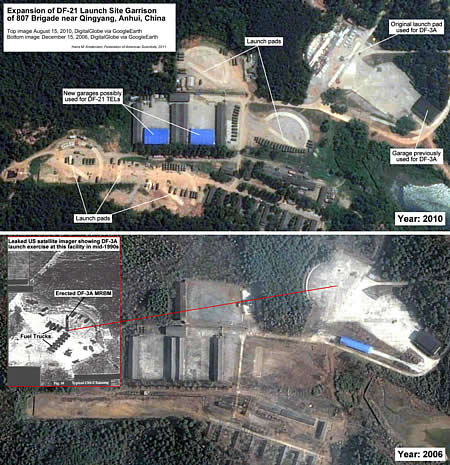Event: Conference on Using Satellite Imagery to Monitor Nuclear Forces and Proliferators
.
By Hans M. Kristensen
Earlier today we convened an exciting conference on use of commercials satellite imagery and Geographic Information Systems (GIS) to monitor nuclear forces and proliferators around the world. I was fortunate to have two brilliant users of this technology with me on the panel:
- Tamara Patton, a Graduate Research Assistant at the James Martin Center for Nonproliferation Studies, who described her pioneering work to use freeware to creating 3D images of uranium enrichment facilities and plutonium production reactors in Pakistan and North Korea. Her briefing is available here.
- Matthew McKinzie, a Senior Scientists with the Natural Resources Defense Council’s Nuclear Program and Lands and Wildlife Program, who has spearheaded non-governmental use of GIS technology since commercial satellite imagery first became widely available. His presentation is available here.
- My presentation focused on using satellite imagery and Freedom of Information Act requests to monitor Chinese and Russian nuclear force developments, an effort that is becoming more important as the United States is decreasing its release of information about those countries. My briefing slides are here.
In all of the work profiled by these presentations, the analysts relied on the unique Google Earth and the generous contribution of high-resolution satellite imagery by DigitalGlobe and GeoEye.
This publication was made possible by a grant from Carnegie Corporation of New York and Ploughshares Fund. The statements made and views expressed are solely the responsibility of the author.
The Federation of American Scientists applauds the United States for declassifying the number of nuclear warheads in its military stockpile and the number of retired and dismantled warheads.
North Korea may have produced enough fissile material to build up to 90 nuclear warheads.
Secretary Austin’s likely certification of the Sentinel program should be open to public interrogation, and Congress must thoroughly examine whether every requirement is met before allowing the program to continue.
Researchers have many questions about the modernization of Pakistan’s nuclear-capable aircraft and associated air-launched cruise missiles.
